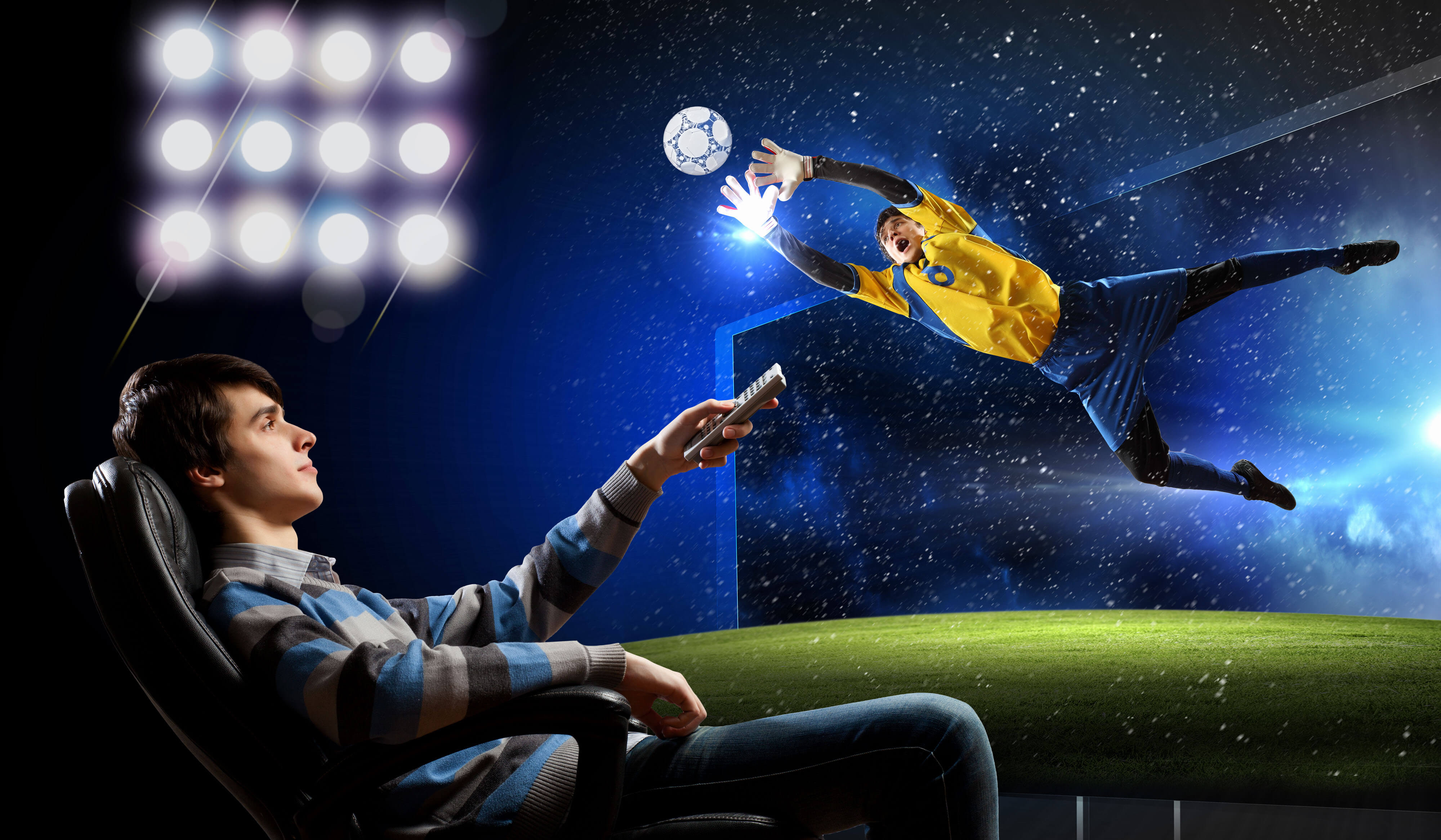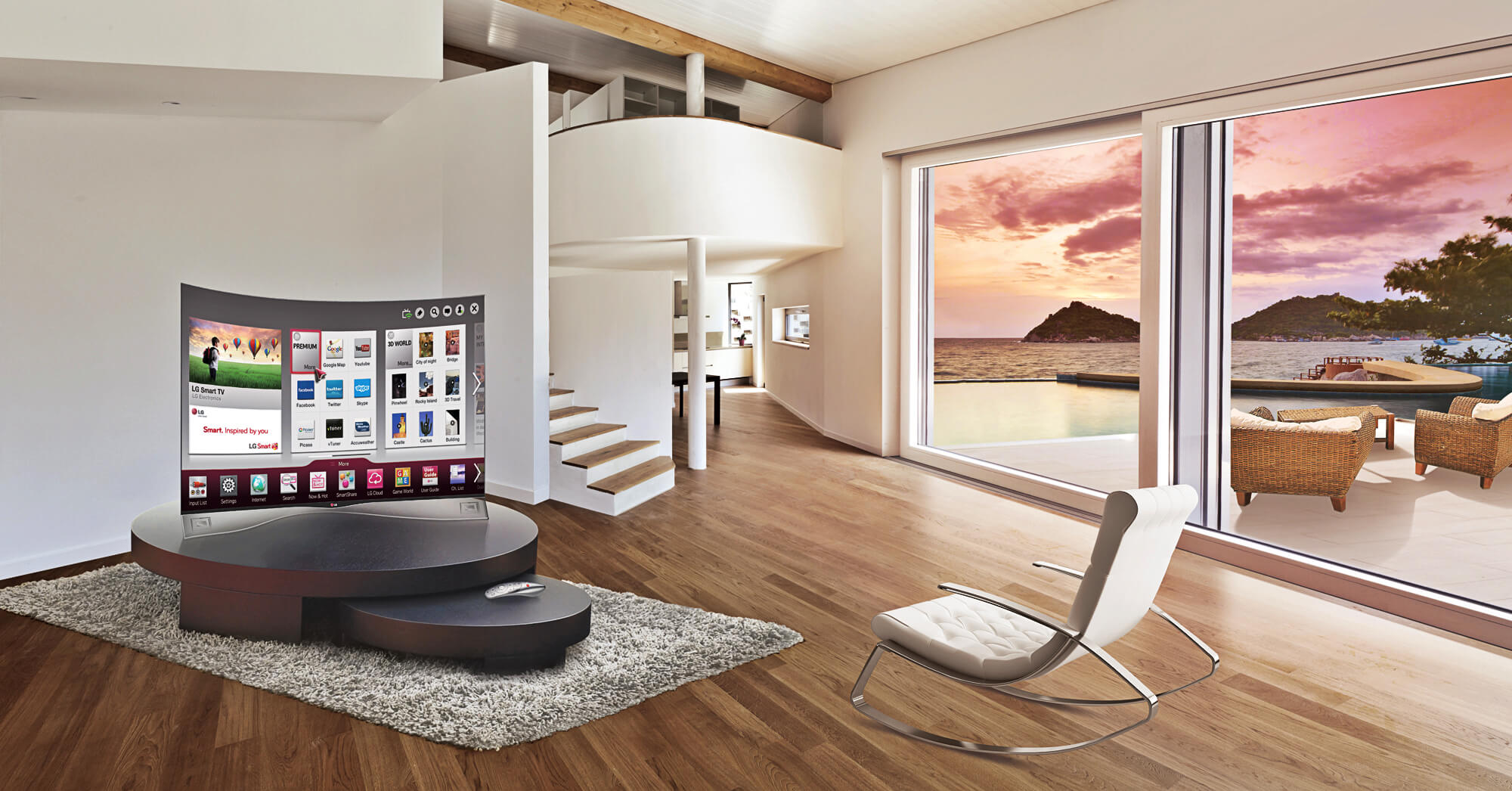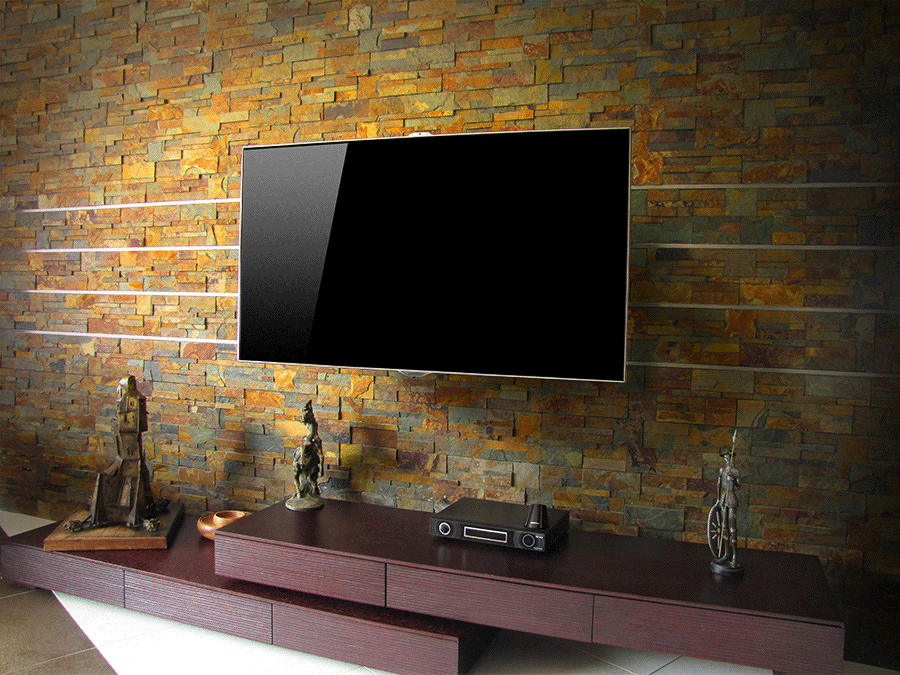
How do I find the best TV for sports?
We will show you the features and specifications you need to pay attention to when buying a TV for watching sports. We will explain them all to you below and help you find the best TV for watching sports within your budget.
| TV | Year | Sizes | Sports Rating | Cost | See Today’s Prices |
|---|---|---|---|---|---|
| LG EG9100 | 2015 | 55″ | 9.5 | Mid-Range | Check Amazon |
| LG E6 | 2016 | 55″ 65″ | 9.2 | High End | Check Amazon |
| Samsung JU6400 | 2015 | 40″ 48″ 55″ 60″ 65″ | 8.7 | Budget | Check Amazon |
| Sony X810C | 2015 | 55″ 65″ | 8.4 | Mid-Range | Check Amazon |
| Vizio P Series | 2016 | 50″ 55″ 65″ 75″ | 8.4 | Mid-Range | Check Best Buy |
I think you will agree with me when I say:
We are passionate when watching our favorite sports.
There is no doubt that our televisions are a vital part of the experience. HDTV sales spike each year in the days heading in to the Super Bowl.
Is it difficult to find a great TV for watching sports within my budget?
Will it also be an excellent TV for watching movies or will I have to shell out more bucks for another TV?
I think you will be excited to learn that the best TV for sports is a good TV for watching everything.
The requirements for displaying the best quality picture for a football game is almost identical for the best settings for watching a Star Wars movie marathon. However, your satisfaction with watching your favorite sporting event is more complicated than simple pixel processing.
Some TVs do possess different features and qualities the make them better for watching sports. When you’re shopping for a new TV in anticipation of the big event, there are a handful of specs and features that give certain models a competitive edge.
- Screen size of at least 55 inches
- Screen resolution of 1080p or 4K
- Great viewing angles without contrast loss
- Deep black levels
- High scan rate
- No motion lag or motion blur
- Loud, clear sound quality
This criteria for choosing the best sports TVs is based on:
1) When you’ve got the guys over watching the game you do not want the picture to look washed out at angles. The screen size, screen resolution, and a wider viewing angle are key to make sure this doesn’t occur.
2) You want to action to appear smooth and clear. Motion lag or blur are produced when the processing in the TV are slower than the object moving on the screen causing some delay. Judder is that annoying jerky effect when the object or person moves side to side across the display. It should be smooth.
3) You certainly don’t want the picture to appear washed out in brighter light. High contrast and deep black levels these two go hand in hand to prevent that from happening.
4) Finally, loud and clear sound quality help you feel immersed in the action.
Here is 11 things you must consider before buying a new TV for sports viewing.
WHAT SIZE TV SHOULD I BUY for watching sports?
Bear in mind, the best picture quality and most features tend to be on the bigger HDTV panels. The best value in TVs today are in the 50- and 60-inch flat screen sizes.
As a general rule to get the perfect size TV for a 1080p display, we suggest a viewing distance between 1.5 and 2 times the screen diagonal. So if you are setting six feet (72 inches) away from your TV, a 48″ 1080p HDTV is the recommended size.
You can sit closer to see the extra details of 4K TVs, so we suggest a viewing distance from 1 to 1.5 times the screen diagonal. So for the same six feet from the TV, you could easily enjoy a 70″ or 75″ 4K Ultra HDTV.
We recommend at least a 55″ screen display, unless you have a really small room, to draw you and other viewers into the action. Otherwise, get as big a screen as your budget allows.
- Curvedview.com recommends at least a 55″ TV screen
- Buy a 1080p HDTV that is 1.5 times the viewing distance
- Buy a 4K Ultra HDTV that is 1 times the viewing distance
What Screen Resolution Should I Choose?
Depending on the network, in high definition, football is broadcast in either 720p or 1080i. CBS, NFL Network and NBC broadcast games in 1080i.
Fox, ESPN and ABC broadcast in 720p. HDTVs that are native 1080p will up convert the 720p broadcast to 1080p seamlessly.
Does the Sports Being Viewed Matter?
The sport being viewed could have some impact.
Those that primarily watch sports where the movement of a relatively small ball or puck is critical to the action, like golf, tennis, hockey, or baseball, should opt for higher resolution. We recommend going with a 4K screen display for sports viewing of this type.
It makes less difference in sports like basketball, football, or car racing. A 1080p resolution will take care of all your needs for watching football and similar sporting events.
- Get a 1080p resolution TV when viewing sports like football or basketball.
- Get a 4K Ultra HDTV for watching sports like baseball, tennis, golf, and hockey.
Which HDTVs Have the Best Wide Viewing Angles?
Viewing angles can vary wildly from set to set.
As a general rule 50-inch and larger TVs with IPS LCD panels (Panasonic, Toshiba and LG) tend to have better off-axis viewing. There are several by Samsung and Sony LCDs that do a decent job with off-axis viewing.
Plasmas have the best off-axis images beating out every LED LCD.
- Plasma TVs have the best wide angle viewing areas.
Is Scan Rate A Consideration for viewing sports?

Which TV is good for Smooth, blur-free motion?
When the action is intense, the best models keep the details crisp. The worst models leave blurry streaks trailing behind anything in motion.
Standard rates are 60Hz, 120Hz, and 240Hz.
Due to its faster native response times compared to LCD TVs, plasma models excel at making action-packed sports look crisp.
Plasma screens excel at making fast, action-packed sports look crisp.
Big screen LCDs and LED LCDs need higher refresh rates to reduce or eliminate motion blur. This feature adds to the cost of the TVs.
We have tested hundreds of HDTV’s. It is our experience 60 Hz LCDs and LED LCDs suffer from motion blur.
LCD models with a 120 Hz and higher refresh rate have processing modes to help reduce motion blur.
The best LED LCDs feature true 240 Hz refresh rates. Like plasma units, these models produce full motion resolution.
- Get a 1080p resolution TV when viewing sports like football or basketball.
- Get a 4K Ultra HDTV for watching sports like baseball, tennis, golf, and hockey.
How do I get Loud and clear sound?
We recommend looking for a display that has extra frame size for the speakers or a separate rear woofer. The extra frame size makes room for more forward facing speakers. A separate rear woofer helps the main stereo speakers and boosts bass.
As an option, you can also consider looking at a soundplate or soundbar. These sit underneath a TV and can produce a richer, more satisfying audio experience.
- Look for a flat screen that has extra frame size for the speakers or a separate rear woofer.
- Consider buying a soundplate or soundbar as an option for more satisfying sound.
Should I buy a 4K TV for viewing sporting events?
In September 2013, Sky Television, with the help of Sony, delivered the first live 4K broadcast of a Premier League match. Since then, the adoption of 4K live sporting content has been slow.
For some strange reason, it looks like the 2016 Summer Olympic Games in Brazil wont be getting public 4K broadcasts. With that being said, 4K video for live sportscasts is definitely becoming a thing on the consumer sports market in North America.
There is currrently very little 4K live sports content
Current 4K Ultra HD live sport event broadcast announcements are centered around Canadian hockey and Univision’s streaming of live soccer in Mexico. U.S. networks are bound to be pressured to catch up to rising 4K demand.
If this is going to be the last television you buy for several years, go ahead and grab a 4K model. If not, I would wait until 4K sports broadcasts are more common before paying extra for the technology.
- At minimum get a 1080p resolution TV.
- If your budget allows, plan for the future and go ahead and grab a 4K Ultra HD model.
IS 3D TV WORTH BOTHERING WITH?
Don’t waste your money on 3D TVs for watching sports
Don’t waste your time or money considering 3D, unless you want to watch a limited selection of 3D Blue-ray movies.
- 3D is a waste of time and money. Avoid buying a 3D TV for watching sports.

There is currently little 4K sports content to view. Only Canada and Mexico currently have some 4K sports content to watch.
CURVED OR NOT CURVED?
At present, LG and Samsung are the only two manufacturers to currently embrace curved TV screens.
The claimed benefits of curved screens include improved contrast performance, creating a greater a sense of depth and immersion than non-curved flat panel screens. A big benefit when you have a large group huddled around the action on the television.
They have their drawbacks as well. First, you need to be in the ‘sweet spot’ (the middle) to get the optimal experience. For this to happen in a group, it means you must have a big curved display to fully appreciate this benefit.
Last but not least, curved screens are more expensive than their equivalent flat screen counterpart.
Test drive one at your local HDTV retailer, before bringing one home for game day.
- Curved screens are a matter of personal choice. Visit your nearest TV retailer to experience a curved screen TV before you consider purchasing.
Should I purchase a SMART TV?
Sports fans have access to a number of applications. For scores, stats, news, and clips, there are no shortage of third-party apps including ESPN, Yahoo, Hulu, and more.
The top live action apps come from the actual leagues, with MLB.tv the hands-down winner.
Due to complex licensing and broadcast rights, it’s impossible to get an app that offers live broadcasts of everything you want when you want. Most apps black out live games in your area. For example, you can’t watch Red Sox games live on MLB.tv in Boston.
- Smart TVs offer access to lots of sports apps.
- The top live action apps come from the actual leagues themselves.
- Check you local TV cable provider for local sports packages.
- Better sports packages may be available from set-top boxes like Apple, Roku, and others.
To watch local games, check if your local cable provider offers a sports package. Currently, NBA League Pass and NFL RedZone are unavailable as standalone TV apps.
Both are available through your computer and mobile devices. As smart TVs become more common, we can only hope that the leagues will embrace Smart TV applications.
For an alternative, check the packages available from set-top boxes like Apple TV, Roku, and Boxee. They may have better sports package access than your smart TV’s built-in app selection.

Plasma, LCD/LED, or OLED: Which HDTV should I buy for sports watching?
Why buy a Plasma HDTV?
Plasma HDTVs have a few distinct advantages over LCD and LED TVs. They handle moving objects better than LCDs do. The response rate for a plasma display can reach as high as 600Hz, where LCD is usually 120Hz.
They tend to have wider viewing angles. Great for hosting Superbowl or March Madness parties.
The range of color of a Plasma is greater. The screen appears brighter from indirect viewing angles, although total brightness is less. Again, a major advantages for large groups watching a game from different positions.
Plasma televisions are usually cheaper than the equivalent LCD and LED.
However, Plasma sets are generally limited to screen sizes between 40 inches to 65 inches. A potential deal breaker if you are wanting to grab a really big screen.
Finally, they are much less energy efficient than LCD models.
- If your ideal screen size is between 40″ to 65″.
- When you watch fast moving sports.
- You have friends watching from varying angles.
- There is not much direct natural light in your TV room.
- You are not concerned with increased energy use.
When does it make sense to buy a LCD/LED TV?
LCD, or liquid crystal display, are by far the most popular type of HDTV. LCD and LED TVs have a wide range of features, screen sizes, and prices.
LCD and especially LED sets get much brighter than plasma. If you’re in a sunny room with lots of natural light, this aspect makes it easier to see the action .
They’re also thinner and more energy-efficient. Unfortunately, the larger television sizes will probably be more expensive than an equivalently-sized plasma.
Lower-end LCDs are back lit with CCFL (cold cathode fluorescent lamp) technology. The newer alternative is the LED (light emitting diode) version.
The primary advantages of LED are increased brightness and a considerable reduction in energy use. Unfortunately, the added price of LED sets means it will take years to recover the cost in terms of reduced energy bills.
Additional advantages of LED are the screen is thinner, and the display’s life span is longer.
- When you want a screen size larger than 65 inches.
- If you are watching TV in a room with a lot of natural light.
- When you want a thinner display screen.
- You are concerned with reducing energy usage and bills.
Is an OLED HDTV the best TV for watching sports?
OLED TVs are another brand-new option to consider. At present, OLED HDTVs are the very best TV for sports viewing.
OLED is short for Organic light-emitting diode. Where LED TVs use a liquid crystal display and aback lighting system to create an image, OLED panels themselves emit light when an electrical current passes through them.
OLED’s have some distinct advantages over plasma and LCD/LED TVs. The blacks are noticeably deeper on the OLED than they are on the LED. In fact, they emit ‘perfect black’.
Many OLED TVs employ what is known as sample and hold when displaying an image. That means that each frame of the video is displayedfor a certain amount of time before transitioning to the next. This greatly reduces or removes motion blur trail on fast moving objects.
LED images begins to look washed-out when you view the TV from an angle. OLED’s have a significantly wider viewing angle. The only negative to the OLEDs wider viewing angle is the picture takes on a yellow tint when viewed from far off to the side.
The major drawback of current OLED TVs is the cost and availability.
The cheapest OLED TV is far more expensive than the cheapest LED TV. A LG’s 55-inch curved model costs $14,999, and Samsung’s OLED set will be $8,999 when it’s released.
You may need to earn a major league salary to afford one.
- If money is no consideration.
- You want the very best viewing experience when watching sports.
Where can I buy a TV for Watching Sports
Now that you know everything there is to know about getting the best TV for watching sports, we will show you where to buy a TV for watching sports at a great price. We recommend a handful of trusted sources.
- Amazon
- Best Buy
- Walmart
- NewEgg
- PCRush
- Abe’s of Maine
- PC Mall
- Tech For Less
Let’s Set Up Your New TV For Viewing Sports
Youve selected the best HDTV for watching sports within your budget. We need to fine tune the settings to get the very best out of your new set.
The picture on your HDTV will look great out of the box, but you should make time to customize the setup of your new television for optimal sports viewing.
Depending upon your expertise and desire for customization, you have 2 choices of customization available.
Does your HDTV have Sports Mode?
Sports mode is an option that more manufacturers are adding into their HDTV presets. When enabled, Sports Mode helps you get the optimal picture and sound settings for sports events.
How to enable sports mode varies by manufacturer. Some manufacturers require you to simply select the option in the settings menu. Others require you to change certain picture settings.
Typical Factory Presets
| Picture preset | What it does | What it’s good for |
|---|---|---|
| Dynamic/Vivid | significantly increases contrast, brightness and sharpness | video games, animation, overcoming strong room lighting |
| Standard | modestly increases contrast, brightness and sharpness | viewing standard broadcast, cable, or satellite programs |
| Movie/Pro | contrast and brightness settings adjusted for greater realism; enhancements like sharpness are reduced or eliminated viewing your best-quality sources like DVDs and HDTV programs | TVs come from the factory set up to stand out in a showroom. Choose a picture setting preset that’s better suited for your living room. |
| Sports | increases contrast, brightness and sharpness; motion-smoothing and noise-reduction settings are turned on or increased | best for viewing standard broadcasts of action oriented programing |
If your new TV doesn’t have Sports Mode
Most HDTVs include several other factory picture preset modes. These preset modes have names such as ‘Vivid’, ‘Movie’, ‘Dynamic’, ‘Pro’, or the basic ‘Standard’.
Grab your TV remote and select the input that is connected to your source for sports:
- If your TV room has a lot of natural light, toogle between ‘Standard’ and ‘Dynamic’ or ‘Vivid’ to find the preset that you feel looks best.
- If you watch sports in a room with less or no direct sunlight, the ‘Movie’, ‘Cinema’ or ‘Pro’ settings may be your preference.
Picture quality is a very subjective area. No two sets of eyes will see things exactly the same way.
So go with what looks great to you and only use the preset guides as a reference.
Now find the motion-smoothing and noise-reduction settings. Experiment with turning each ‘on’ and ‘off’ to find an arrangement that works best for your sports viewing.
Now it’s time to watch the big game!
More than any other segment of television viewers, sports fans demand a lot from their TVs. They want the “speed” of the TV to keep pace with the game they are viewing. As many events are broadcast during weekend daylight hours, many sports fans want a bright screen to overcome natural daylight.
Now you have all the information you need to make sure you get the best TV for watching sports in your man cave.
Go ahead and invite some friends over, sit back, relax, and watch the game, like you have never seen it before.
Do you have any tips for sports fans who need a new television? Can you recommend a good TV for viewing sporting events? Be sure to leave them in the comments!








